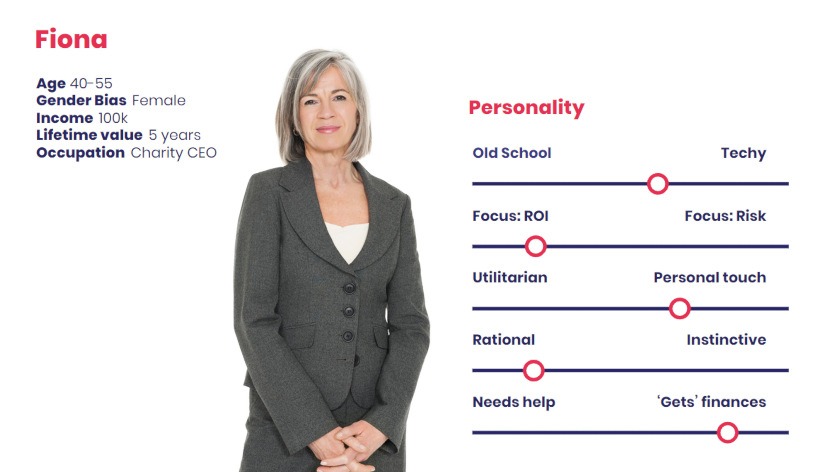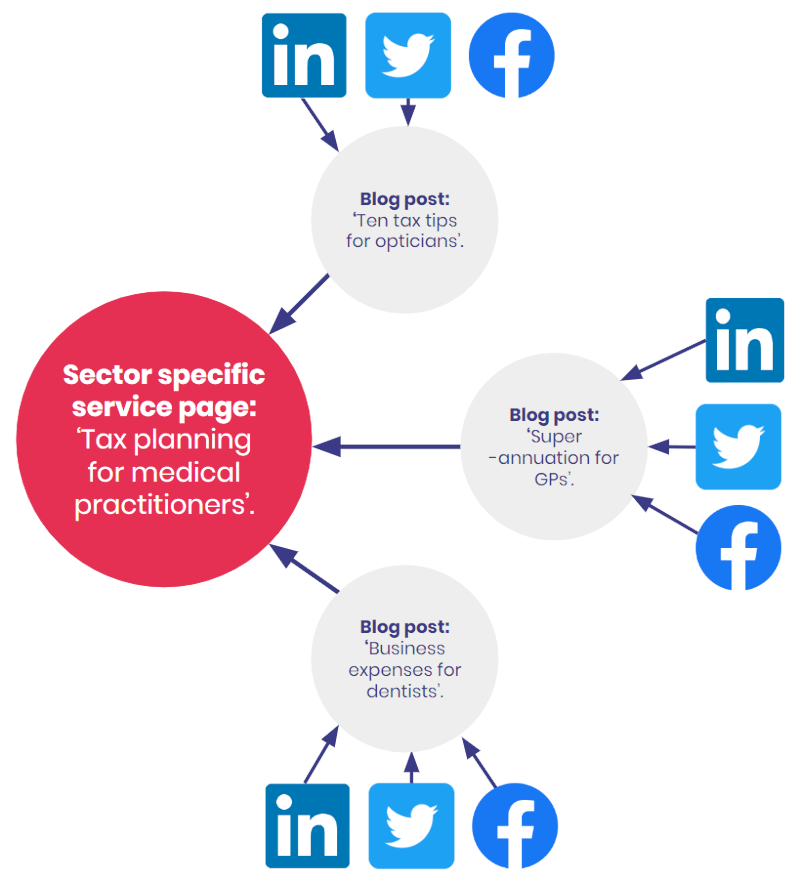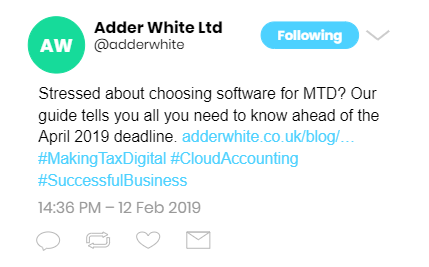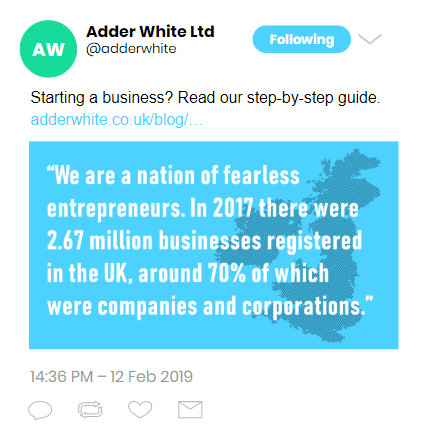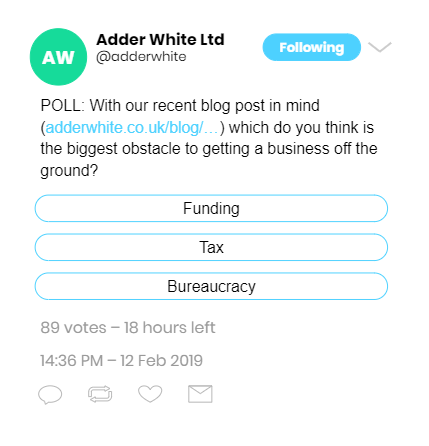Content marketing for accountants: the complete guide
How content can help your firm engage with the clients it really wants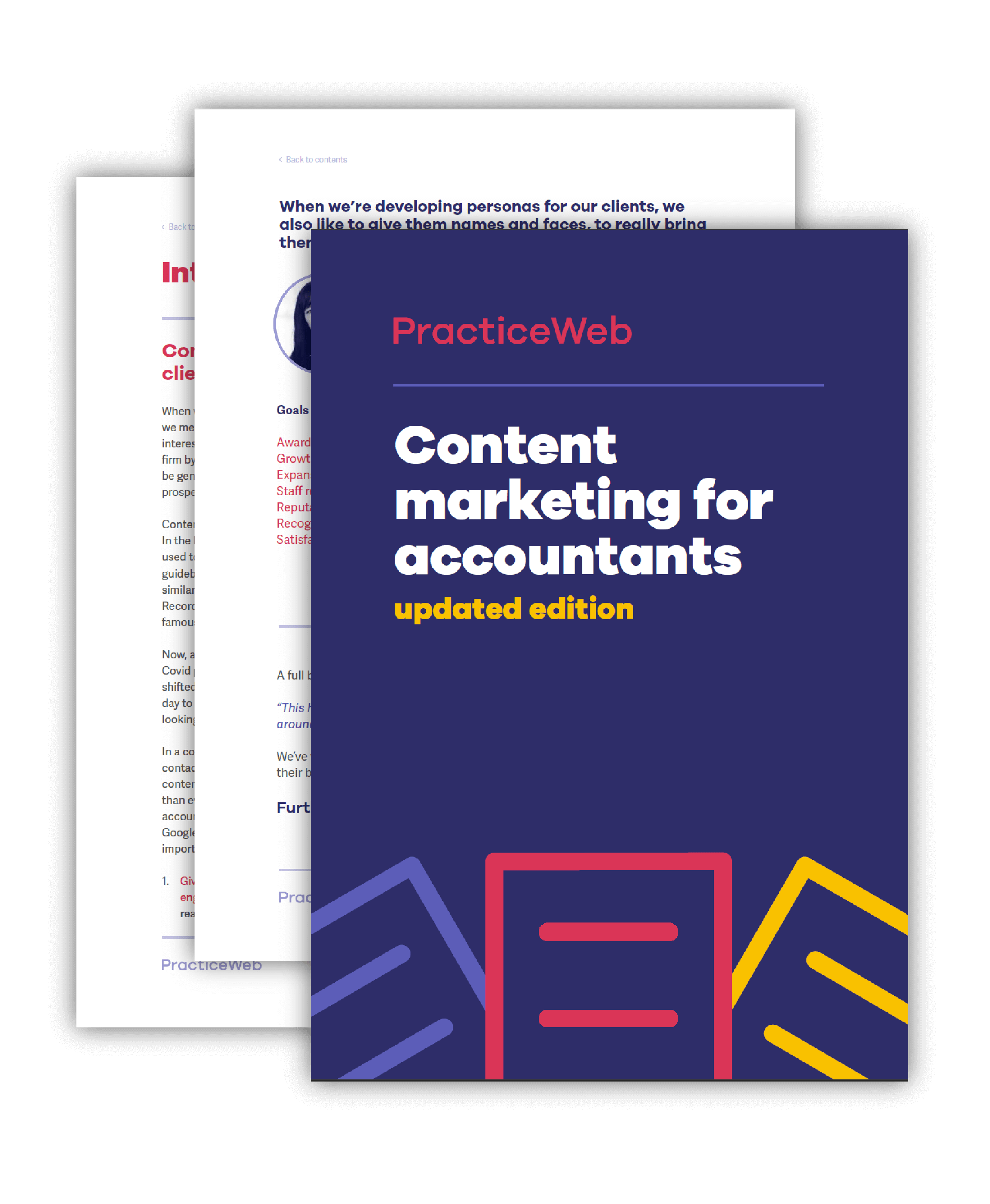
Updated 2022 edition
When we talk about content marketing, we mean the process of generating engagement with your accountancy firm by providing material that will be genuinely helpful for clients and prospective clients.
Content is typically cheaper than paid advertising but poor quality content can turn off potential clients. And if it’s not unique, Google won’t rate it.
Updated for 2022, our eBook: ‘The complete guide to content marketing’ takes you through key areas of content production such as:
- defining content marketing goals and the ideal client
- one-off website copy vs ongoing content
- structuring content for online
- building a content plan
- creating content yourself
- how to maximise the value of content.
We hope this eBook will help you produce content for your website that your potential clients will want to read, and that those visits convert into calls or emails and, eventually, new clients.
Alternatively, talk to us about our packages of website content for accountants.
Download the eBook
Sample: The complete guide to content marketing for accountants
This guide was created by the PracticeWeb team.
Introduction
When we talk about content marketing, we mean the process of generating engagement with your firm by providing material that will be genuinely helpful for clients and prospective clients.
It’s just one aspect of marketing for accountants – but an important one.
Content marketing isn’t a new thing. In the Mad Men era, big companies used to produce calendars, almanacs, guidebooks, magazines and all sorts of similar collateral.
The Guinness Book of Records and the Michelin Guides are two famous examples.
Now, as the world recovers from the Covid pandemic, people have inevitably shifted to relying more on digital in their day to day lives– and that includes those looking for accountants, too.
In a competitive market, with less human contact than before, making sure your content cuts through is more important than ever to put you ahead of the accountant down the road (or next in the Google search results).
There are two important factors to think about:
- Giving them something to engage with – content they’ll want to read, watch and hopefully share.
- Making sure it surfaces in web searches – providing keyword-rich, substantial, authoritative copy that Google can get its teeth into.
The good news is that these are mutually compatible goals: on the whole, content that works for readers also works for Google, which is designed to surface material with expertise, authority and trust (EAT).
We know that tax and finance are subjects on which people are particularly hungry for clear, consistent information. We also know that, by meeting people’s need for information, you establish trust early on, trust that leads to conversions.
A recent analysis of the clients we work with on their content marketing and blogging revealed that they get, on average, 107% more conversions year on year. That’s hundreds of leads a month, driven by informative, targeted content.
But of course there’s bad news, too: there are no shortcuts or dodges. Producing interesting, credible content requires time, effort and thought.
A decade or so ago, when Google’s algorithm was much less sophisticated, it was possible to game the system with trash content stuffed with keywords. This kind of thing would rank highly and win raw clicks but it infuriated and frustrated users.
In 2022, it won’t wash: Google penalises it, users won’t engage with it, and it damages the credibility of brands that do it.
Further reading:
When will I see results for my accountancy firm’s digital marketing and SEO spend?
That’s not to say that creating or commissioning quality content has to be a nightmare. There are certain processes you can follow, and good practice to which you can adhere, that can make if, if not easy, then at least painless.
That’s what we’re going to cover in this complete guide.
- Content marketing goals
- Buyer personas – the ideal client
- Brand building vs. lead generation
- Different content types
- Website content structure
- Long-term planning: the content calendar
- Sourcing content from colleagues
- Creating content yourself
- Adapting white label content
- Commissioning third-party content
- Maximising the value of content
- Social media: not just for sharing
- Conclusion: takeaways
1. Define your content marketing goals
Don’t dive straight into creating content – pause, take a breath, and think.
Content should be the end point of the process, not the beginning.
If you’re producing content for the sake of it, without a specific aim in mind, it will read as fluff and alienate those whose attention you’re seeking to grab.
So, what do you want your content to achieve?
Some common goals for accountancy firms include:
- Generating leads among specific target client groups, e.g. farmers, or creative agencies.
- Raising the profile of a specific service or aspect of your firm’s business, e.g. cloud accounting.
- Setting out what differentiates your firm from the competition, e.g. fixed fees, or advisory services.
- Improving search rankings by answering demand for specific information revealed through keyword analysis. For example, is there an untapped desire for information on R&D tax credits in your town or region?
A sensible approach is, first, to determine two or three overarching goals that apply to your body of content in its entirety, ideally prioritised.
This will immediately give shape to your communications: if what you’re doing doesn’t contribute to those objectives, why are you doing it?
Conversely, you might find that it helps identify where investment of time and effort is most valuable because a single piece of work will hit more than one marketing target.
2. Start with clients
If one of your content objectives is to generate leads – and let’s face it, that is the most common motivator for any communications activity – then you need to think about and focus on your ideal client.
We say ideal client because we know many accountancy firms serve multiple client groups but would prefer to move towards having more from Group A and fewer from Group B.
Content is a great way to send the right signals to those Group A clients – to say, loud and clear, that you are the accountant for them.
It might be as simple as acknowledging that lots of your clients are in retail and hospitality, but you want more from the medical profession, so your content needs to focus more on superannuation for GPs and less on generic advice on, say, cashflow.
A technique many professional marketers use is to define what are known as ‘buyer personas’, or ‘client personas’.
In brief, the idea is to create a few imaginary clients which personify entire groups of potential customers out in the real world, pinning down for each persona information such as:
- the path they’re on in choosing where to buy accountancy services – the ‘buyer journey’
- their pain points – where they’re struggling and how you can help
- their information needs – what do they need to know, in which format?
When we’re developing personas for our clients, we also like to give them names and faces, to really bring them to life, like this:
A full buyer personas exercise in a branding workshop can be a revelation: “This has just brought home to me how much of my time I waste running around after Humphrey when I really want to be doing business with Jane.”
We’ve worked with accountancy firms which have fundamentally changed their brand messaging and approach as a result.
Further reading: download our eBook on buyer personas.
3. Brand vs. lead gen
One issue that sometimes arises is an apparent conflict between the needs of brand development and the desire to generate leads via search engine optimisation (SEO).
The former is an exercise in rhetoric, putting across personality, values and vision in appealing prose and catchy turns of phrase.
The latter, on the other hand, might occasionally require the use of clunkier language because clients rarely search for brand slogans. In fact, they probably won’t use full sentences, or even put words in the order they’re typically spoken.
For example, if your potential clients are searching ‘optician accountants Wolverhampton’ and the closest your website copy gets to that is ‘Serving healthcare professionals since 1982’, you might be in trouble.
If you’ve thought about your objectives, though, this shouldn’t be too difficult to resolve: whichever is the higher priority objective wins – decision made.
Some of our clients tell us plainly that they have more business than they can handle and so the purpose of their websites, and their content, is to serve and engage existing clients, and build the brand.
Others just want to build their sales funnel – to get as many potential clients as possible to visit the site, initiate a conversation and, hopefully, start doing business.
In which case, elegant prose is less important than effective search engine optimisation and hitting those keywords.
But remember, it’s never worth completely mangling your copy for the purposes of SEO – readers are sophisticated, can tell when it’s happening, and don’t much like it.
4. Copy vs. ongoing content
In our experience, when we talk about content, most people immediately think of blog posts.
That’s because typically the blog is the section of any accountants website that users expect to have a flow of new content and which, if neglected, most quickly get out of date. (There’s not much sadder than the sight of a company blog last updated in 2016.)
In reality, however, content takes many forms, such as:
- website pages
- social media feeds
- press releases
- eBooks
- research reports
- email newsletters
- video.
Different types of content ought to be weighted differently.
Website copy, for example, has a long shelf life and ought to be crafted and polished to the Nth degree. Every word should be chosen with care, every punctuation mark purposefully selected and, ideally, house style and tone of voice documented for future reference.
Blog posts, on the other hand, can afford to be a little less polished – a steady flow of content and topicality are arguably more important than absolute perfection. If they’re in slightly different voices, that’s probably fine, too, as long as they’re broadly consistent with your firms brand and identity.
Social media posts are the most transitory of all (the average life of a Tweet is reckoned to be something like eight minutes) and so even more so than with blog posts, focus on a constant supply of material rather than spending hours constructing the perfect 280 characters.
To employ a rather ripe analogy, it’s a bit like the difference between restaurant meals, weekday dinners, and on-the-move snacks.
Further reading: our chief editor Ray Newman on the thought process behind building ‘Meet the team’ pages for accountants.
5. Website content structure
With website copy in mind, it’s worth taking a moment to reflect on site structure and the relative value of different content types in terms of SEO.
Accountancy service and sector-specific pages, though they might seem rather dull to put together, are hugely beneficial in terms of attracting prospects via web searches.
That’s because people typically look for something quite specific and so a permanent page which mentions that specific topic is typically most likely to turn up in results.
This content is rarely inspiring but that doesn’t mean it’s not useful or relevant. What it does is remove ambiguity – it says, clearly and straightforwardly, that, yes, you do provide that particular service, for that specific type of client.
It takes a step out of the buyer journey and moves a potential client closer to the point where they decide to work with you.
Pages are generally more valuable for SEO than blog posts, and blog posts are better than PDFs, which are better than videos or audio files.
Using a variety of media in different formats together, however, is the most powerful approach of all – a page linking to supporting blog posts, enriched with in-depth downloadable content, and brought to life with multimedia, is the ideal solution.
But all of that takes time, effort and, most crucially, strategic planning.
6. The big picture
To build a content plan, you need two things: a blank calendar, and time and space to think.
First, perhaps work-shopping with colleagues, mark up fixed events in the year, such as:
- key tax dates, e.g. the self-assessment deadline
- seasonal events – religious holidays, school terms
- national or international events, e.g. International Women’s Day
- events relevant to your clients, e.g. trade conferences
- local events – carnivals, festivals, sporting occasions.
“Even if they’re not directly relevant to your business national events such as the Grand National are great opportunities to join in the conversation. Try to be engaging or witty and use all the relevant hashtags on social media to reach people who might not otherwise come across your content.” – Philippa Jordan, PracticeWeb’s marketing manager
That will already give you a sense of some beats you need to hit – ‘Don’t spend Christmas filling in your tax return’ is a perennial classic suitable for blog posts or social media.
Further reading: our deputy editor James Martini on how accountants can use topical content to engage clients.
Next, set some communications priorities on a monthly or quarterly basis.
For example, accountancy firms often experience acute client churn in February and March, so a priority might be lead generation, among one or more specific market segments, to rebuild the customer base.
Similarly, Quarter 3, when things are often a little quieter because of summer holidays, might be a good time to focus on encouraging clients and prospects to research strategic decisions. A change in cloud accounting software, for example.
Finally, start filling in some specific items of communications – blog posts, social media posts, new pages on the website, webinars, and so on.
As a bare minimum, for each piece of content, suggest a headline (you can always change it later) and give a brief outline of what you want it to say.
Another crucial thing is to pin down exactly who is going to be responsible for writing or producing what, and then making sure they actually do it in good time.
7. Sourcing content from colleagues
We’ve all been in those fresh-start conversations where everyone agrees it’s finally time to sort out the company website and, yes, everyone is up for writing something.
People get fired up, talk the talk, agree to make time for writing and then… Nothing.
“I’m sorry,” they say, “but I’ve just been slammed with client work,” and of course clients and billable projects do tend to take priority.
So, six months later, all your grand plans have amounted to nothing.
There are, however, a few tricks for getting ideas out of your colleagues’ heads and down onto the page.
First, when you come out of that marketing meeting, while everyone is still buzzing, get the commitment in writing: email everyone who has agreed to write something confirming it and setting out exactly what you’re expecting from them, by when.
You might also consider putting the final deadlines in their calendars, along with a reminder a week before, and a month before.
When, inevitably, in the run up to the deadline, people sheepishly tell you they just won’t have time, there are a couple of fall-back options. (Other than guilt-tripping them and/or bursting into tears.)
First, if there’s time, you might be able to coach them through the process – a little encouragement and support can go a long way. Even though this might initially absorb more of your time, the advantage to this approach is that it increases confidence and capability in the long-term.
Secondly, you could suggest that they spend ten minutes to provide an outline in bullet points which you or someone else can flesh out on their behalf – ten minutes work rather than an hour, hopefully.
Thirdly, you might try interviewing them. Some people are simply more fluent expressing themselves verbally and might be more comfortable making their contribution this way than being forced to sit in front of a blank page.
In the end, though, you might conclude that it’s better not to rely on your colleagues at all and instead decide to source content elsewhere.
8. Creating content yourself
If you want a job doing properly… Sometimes, especially if you’re a confident and speedy writer, it’s quicker and easier to produce content yourself.
This also makes it easier to maintain a consistent tone and ensure everything fulfils its function within the communications plan, in line with your content objectives.
But if you’re not such a confident writer, don’t worry.
First, practice makes perfect – the more you do, the easier it gets.
Secondly, check out this blog post on how to go from a blank page to a blog post in 30 minutes. It outlines various techniques for finding inspiration, structuring items of content, and dealing with writer’s block, among other topics.
One key piece of advice is to follow the standard process for writing:
- Outline – bullet points or notes which provide the structure of your article or blog post.
- Draft – the first draft can be as rough as you like, the point is to fill the page.
- Edit – then fix your draft in the edit, filling in gaps, trimming excess, and improving clarity and style.
- Proofread and polish – fix any typos, double check spellings, tidy up punctuation and paragraph breaks, and so on.
Going back to those reticent colleagues from the section above, writing a first draft of an article or blog post can also be a great way to prod them into finding time to get involved.
After all, though they might lack capacity to write a piece from scratch, almost everyone will find a few minutes for the irresistible pleasure of correcting someone else’s mistakes.
As long as you’ve got a thick skin, let them. If it means you get the end product you need, what does it matter?
9. Adapting white label content
One great and cost-effective time-saver is what is known as white-label content – material written by a third-party and supplied to multiple clients under a licence which permits them to present it as their own work, or adapt it.
Our long-running Business and Tax Pack is one example of such a product, as are our annual Budget and Spring Statement reports.
The benefits are clear, especially in a technical field such as accounting:
- ideas sourced
- topics researched
- facts and figures accuracy checked
- structure and narrative defined.
There are some things to take into account, though:
- if you just copy and paste, it won’t do much for your SEO
- it won’t necessarily fit with your content objectives or plan.
We recommend using it as a jumping-off point for creating your own customised content, rewriting it as much as possible. You’ll still save plenty of time and mental energy.
If you have a bit more budget to play with, though, there is an even easier option: get someone else to do it.
10. Commissioning content
There are two options for commissioning custom accountancy content unique to your firm:
- freelancers
- agencies
Within that first category, there’s everything from £5-a-job online marketplaces to top-end tax specialists writing for the most prestigious publications.
Depending on what needs writing, you’ll want to consider how much technical expertise you need your freelance writer to have, and how much you’re willing to do to polish the finished product.
As in every aspect of life, you get what you pay for. Freelance writers that have been endorsed by your peers, or who have a track record of working in the industry, may be the safest bet.
Content agencies (such as PracticeWeb) will usually have writers and editors in-house, or may subcontract to their own roster of freelancers.
There might be an additional cost compared to hiring a writer on the open market but they’ll also have been vetted, with a proven track record.
And if you’re buying copywriting services or content as part of a package of services, such as website design or brand strategy, it might actually work out cheaper.
Whoever you decide to work with, there is some best practice that applies across the board:
- Agree the terms of the relationship clearly, in writing. In particular, pin down how many rounds of amends you expect to be able to make within your initial fee.
- Provide a clear, detailed brief – how many words do you want, by when, covering what? If you’ve got house writing style preferences or an established tone of voice, tell the writer – don’t expect them to guess.
- Give specific, frank feedback. “I don’t like it but I couldn’t tell you why” isn’t at all helpful; “It needs more on R&D tax relief, with a tone closer to broadsheet news” is much better.
If you find you need to justify the additional cost of purchasing bespoke content, one thing to bear in mind is the total value that can be wrung out of a single piece of content in the months and years that follow.
11. Maximising the value of content
Once you’ve got a perfect item of content, you need to make it work.
In the first instance, content is the fuel for engagement. It gives you something to talk about on Twitter, Facebook, LinkedIn, or wherever your ideal clients hang out.
The obvious thing to do is simply link to it:
Another approach is to pull a particularly snappy quote and turn it into a graphic:
You might also consider using at the basis for a poll:
The major social media networks all make it easy to pay to promote a post these days, too, making sure your message gets in front of key audience groups.
In practice, we’d recommend sharing new items of content across multiple platforms, multiple times.
Although there’s a small risk of irritating your followers, as long as you don’t just repeat yourself with the exact words each time, and try to use each re-share as an opportunity to highlight a different angle, most people probably won’t mind.
“When I’m managing brand social media accounts, I like to schedule Tweets for the whole day first thing using HootSuite. It takes ten minutes and then you don’t have to think about it again.” – Lauren Sims, Senior Account Manager
Thereafter, as your content ceases to be new, you can treat it just like the Beatles treat their back catalogue of records: remaster, remix, re-release.
That means revisiting old blog posts or pages after, say, a year, and giving them a polish to bring them up to date. This works really well if you’ve got material about tax rates or thresholds – just change the numbers for the new tax year, add a note saying when it was updated, change the publication date, and republish.
One important point, though: even if you’re updating the content and republishing, avoid changing the URL. The longer a page or post exists, the more back-links it will pick up, and the more authority it will be perceived as having by Google. If you change the link address, you’ll probably lose all of that, and be effectively starting from scratch.
For more on this, here’s a webinar on this very subject hosted by PracticeWeb’s senior editor, Ray Newman, in April 2019.
12. Social media: not just for sharing
If you’re using social media only to share links, you’re missing a trick: most platforms now allow you to share substantial content in various formats, from infographics to full-length text.
Rather than forcing people to click through to your website every time, if social media is where the eyeballs are, take advantage.
This might seem counter-intuitive – we want people to come to the website, don’t we? – but if you want to pick up followers, it’s good for your social media accounts to have some solid content of their own that exists for no other reason than to be interesting in its own right.
The good news is that you can re-purpose material on which you’ve already done all the research and thinking. A great way to squeeze extra value out of an old but evergreen blog post is to slim it down, rewrite it and share it on LinkedIn.
Infographics are a bit less hip than they were a few years ago – as with so many things, a few people churning out junk ruined it for everyone – but if you’ve got access to good designers, they can still make a splash.
Another great format for social media, and one that accountants are well placed to leverage, is ‘tips and tricks’ – what’s your favourite hidden function in Excel or Xero nobody seems to know about? Did you know, for example, that when two numbers next to each other are accidentally transposed, the resulting error will always be divisible by nine? (Well, of course you did, but your clients might not.)
13. Take this away
There’s lots of practical, specific guidance above, but to summarise:
- Set aside some time to devise a content strategy.
- know what you want to put across…
- …and to whom. (Buyer personas.)
- Put time and energy into creating great content…
- …then wring every ounce of value from it.
We’d love to help
PracticeWeb’s expert writers, editors, designers and brand developers can support your content strategy in all kinds of ways, whether it’s a strategy workshop or delivering tailored content.
Take a look at the full range of our content services or get in touch to start a conversation about how we can work with you.
